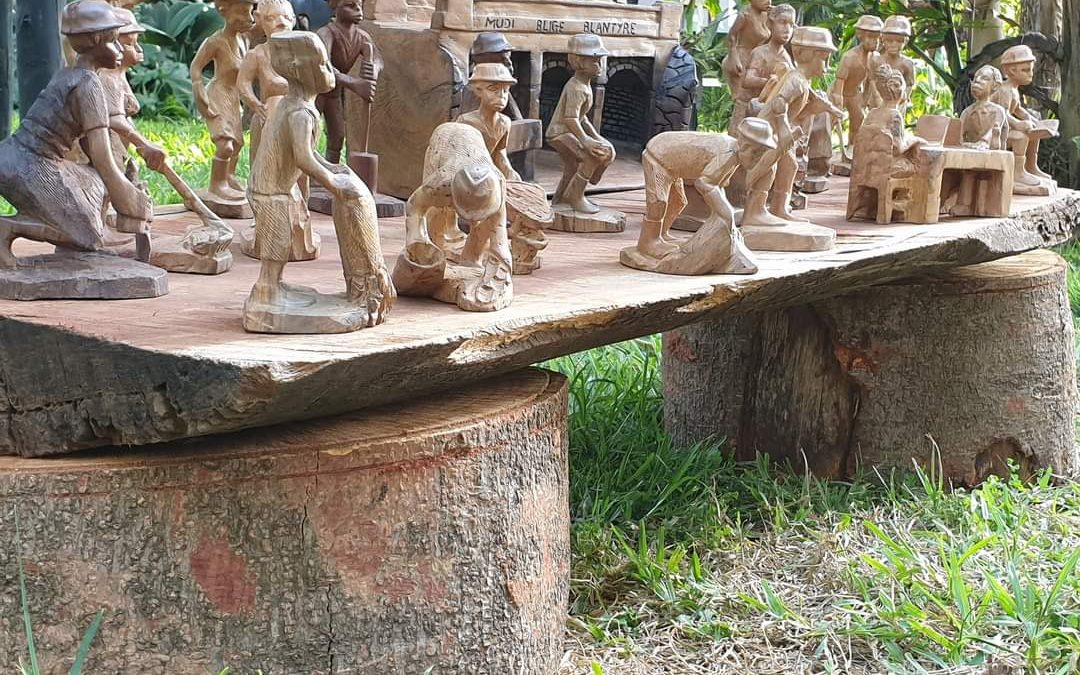Chimwemwe Phiri, a PhD student at the University of Durham in the Department of Anthropology, considers the impact of public art on environmental activism in Malawi.
Blantyre, Malawi’s second major city, has for decades been plagued by a polluted river. The Mudi River runs through most of Blantyre and cuts through the main road into the central business district and a large park in the Sunnyside suburb. One stretch of the river, about 2.5 meters long, is heavily polluted. In 2021 a small group of artists mobilized themselves to clean this area, specifically paying attention to visible piles of rubbish causing an uncomfortable stench that permeated into the city.
In previous years, many efforts to clean up the polluted areas of the river stalled, but this recent initiative sought to approach the cleanup process using art-based methods and a call for social change. In this blog I show how the Mudi River clean-up project exemplifies how art and public health matters can intersect. There are so many positives in being and living in a clean and safe space and this was the overarching message of the project. The artists believed that restoring the river and creating artworks that depicted the area in its past and future glory would promote social affirmation, the cultural transfer of knowledge, and the change needed to transform the area. Long term, the team envisions a community park that nurtures the physical and mental wellbeing of those who visit the space. What drew me to write about this project is how it has confirmed how arts and drawing on cultural needs can have a positive contribution to a public health issue: how it’s understood and addressed. In this blog I share some of my reflections and thoughts around the connections between art and activism and explore some of the artworks through my engagement with the project.
I have a deep interest in the intersections of art and health. I was in the middle of my PhD project consulting with Manota Mphande, founder of ArtMalawi, on a ‘visual repatriation’ element when I had the chance to interact with this project and witness its social impact unfold. Visual repatriation entails taking originals or copies of photographs from repository institutions such as archives and museums (usually based in Western institutions) and reconnecting them with people from the country the material was sourced. My PhD looks into visual representations of tropical diseases produced during the early twentieth century and I had planned a series of workshops with ArtMalawi to interpret historical photographs and consider their contemporary meanings. My engagement with ArtMalawi started in 2019, at the Malawi Medical Humanities Conference when we put together an exhibition responding to the conference themes around representations of the body. In 2021, when I saw the call for the ‘Finding Joy in Healthcare in Africa’ symposium hosted by the Southern and Eastern African Medical and Health Humanities network (SEAMHH) in 2021, I reached out to ArtMalawi about showcasing their work on the river clean-up. They presented a short film (available here) and presentation on the connections between nature, healthcare and wellbeing. Though a different direction to my PhD work, by getting involved in this brief project I witnessed how artists respond to an issue as it unfolds in its contemporary setting and in turn how this influenced creative outputs. It also helped forge my relationships with the group of artists and enabled me to appreciate their mindful engagement with nature and materials, as well as the social and political dynamics of the project.
Art Malawi is a portfolio of Malawi-based artists who utilize a range of media including visual art, woodwork, and stone sculpting. The project envisioned an eighty-day movement that encouraged local artists to design a unique space within the river’s surrounding areas, drawing on natural elements and repurposed materials. Artists worked with metal scraps, fabric pieces and plastic pulled out from the piles of rubbish to show how the waste material could be repurposed. For example, scraps of cloth were made into backpacks and donated to schools. Not only did the material get a second life, it was reused to help children without access to quality backpacks.
As the efforts of Art Malawi’s project began to grow so did interest from the wider public, civil society and private institutions. The team collaborated with biomedical departments from the Malawi University of Science and Technology and the Malawi University of Business and Applied Sciences, local and international NGOs and school programs to raise awareness about the importance of a clean environment. Some of the artists spoke of the past and how people have always coexisted with nature and lifeforms around them and lamented on how this respect for nature has died. There was a wish to bring back these elements and representing them through artworks was one of the ways to communicate this message.
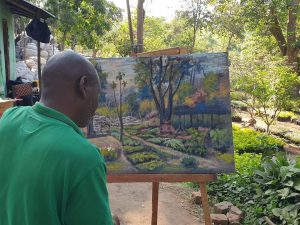
Fig.1. Artist Andrew Missi live painting. Image courtesy of ArtMalawi.
Most of the paintings produced during this project depict landscapes, water features, the river and the surrounding greenery (see figure 1). Another beautiful element of the project is that the clean-up efforts and the replanting of trees have all been visualized through artworks and film projects. For the artists, being able to share a creative experience and create shared meanings around an important topic opened up connections and a sense of joy.

Fig. 2. A poster with a message to care for the environment and illustrating the work of the crew clearing the river. Image courtesy of ArtMalawi.
Carving is a deep-rooted tradition in Malawi. For this project artists drew from this practice that has a rich history, from masquerade pieces to unique object designs, to create pieces that draw out complex social dynamics and reveal a deep craftsmanship and mastery. The pieces ask viewers to interact with themes such as conservation, rebirth, and the relationship between humans and the wider natural environment (see figure 3).
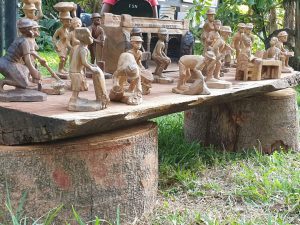
Fig. 3. Wooden objects depicting the bridge and clean-up process. Image courtesy of ArtMalawi.
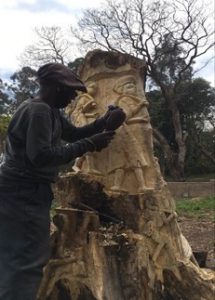
Fig. 4. Mr. Rodgers Mabedi (Rodgers) skilfully transforming a dead tree. Image courtesy of the author.
When I paid my first visit to the river and talked to the woodcarver, Mr. Rodgers, I was struck by the way he talked about his craft and care for the environment through use of dead or fallen trees. Throughout his career, Mr. Rodgers uses fallen trees or tree stumps and possesses a deep knowledge of different kinds of trees which require different carving techniques. The carved pieces he created depict the people who have taken their time to clean the visible trash and are situated within the surrounding environment (see figure 4). Doing this not only offers contemplation for people walking by the busy area, but in a way, he keeps the trees alive by reinforcing the meaning of taking care of the environment and looking towards the future.
Blantyre does not have a history of public art displays. This intervention has changed this by making art accessible and visible in one of the busiest parts of the city. For example, the bridge which was once dull and weathered is now bright and depicts a lush and vibrant environment and images of some of the animals that were once part of the park. The artworks attune with the environment and highlight the culturally responsive manner in which the artists have worked because the colours blend so well with the space. The space brings visibility to the brilliance of Malawian artists, and hopefully it will inspire the next generation to carry on this transformative and radical way of responding to the world through the arts.
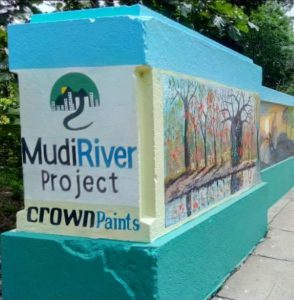
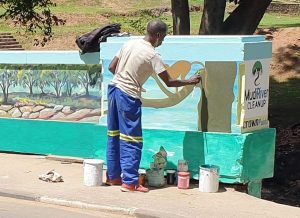
Fig. 5 and 6. The newly decorated bridge. Image courtesy of ArtMalawi.
I conclude this blog by returning to an overarching theme of the Black Health and the Humanities network workshops which is care, and specifically what care looks like when people are moved to care for themselves, others around them and explore the different ways to respond to matters of health and wellbeing. This example of artistic activism generated emotional responses through visual media that inspired others to take action. The group has active social media pages. Images of the cleanup process and some of the artworks had an affective impact on many people who responded by joining in, and this generated an interconnectedness between who the custodians of the city and its nature are, where they come from, and the strength of community to address a critical social and public health issue.

